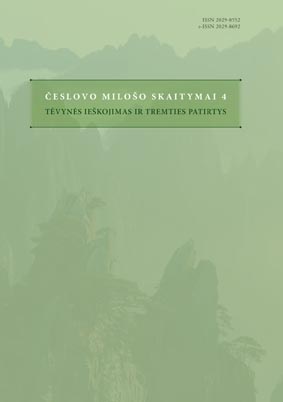Kėdainių kraštas Adomo Mickevičiaus, Oskaro Milašiaus ir Česlovo Milošo kūryboje: grįžties mitologema
Kėdainiai Region in the Creative Work of Adam Mickiewicz, Oscar Miłosz, and Czesław Miłosz: Mythologema of Coming Back
Author(s): Kristina SakalavičiūtėSubject(s): Literary Texts
Published by: Vytauto Didžiojo Universitetas
Keywords: Adomas Mickevičius; Oskaras Milašius; Česlovas Milošas; kėdainiai; regioninės literatūros istorija; kultūrinė atmintis; Adam Mickiewicz; Oscar Miłosz; Czesław Miłosz; kėdainiai; history of regional literature; cultural memory
Summary/Abstract: The history of Lithuanian regional literature classifies Adam Mickiewicz, Oscar Miłosz, and Czesław Miłosz as the authors of Kėdainiai district. The fact that all of them have mentioned Kėdainiai in their creative work lays at the basis of such a classification. Mickiewicz, O. Miłosz, and Cz. Miłosz were writing about Kėdainiai region while living abroad. Personal and cultural memory, as well as imagination were essential for them because all three authors had “to be back” to Lithuania in order to describe the old events. The historical background and the political conflicts which took place in Kėdainiai district were the most important impulse for Mickiewicz. O. Miłosz was researching the mythological past of Lithuania since he was convinced that Kėdainiai district should be the birthplace of his ancestors – he wished to explain his personal genealogy and ethnic origin. Cz. Miłosz spent his childhood in Kėdainiai region; he described Šeteniai estate in documentary manner as the homeland of some generations of his family. In spite of the fact that all three writers used the image of Kėdainiai in their creative work, they still represented three distinct epochs, developed the unique stylistics and had particular goals – it seems it is almost impossible to compare them. The history of regional literature therefore gives such an opportunity. According to it, the only thematic motif is sufficient to identify very different narratives as a cultural heritage of the same region.
Journal: Česlovo Milošo skaitymai
- Issue Year: 2011
- Issue No: 4
- Page Range: 148-158
- Page Count: 11
- Language: Lithuanian

